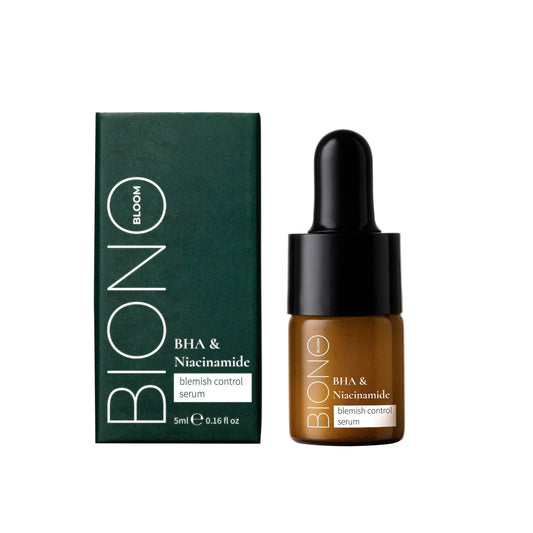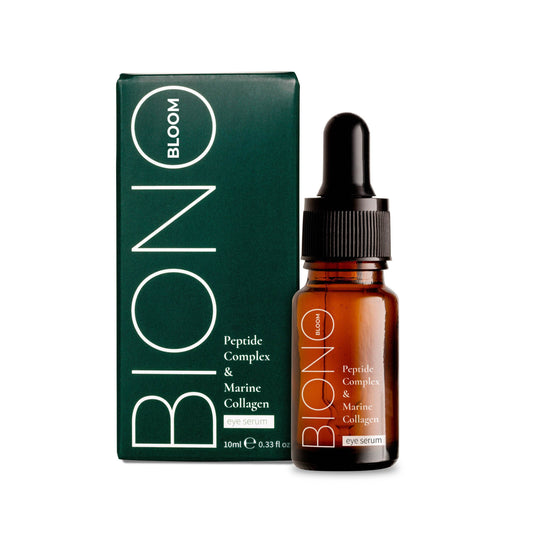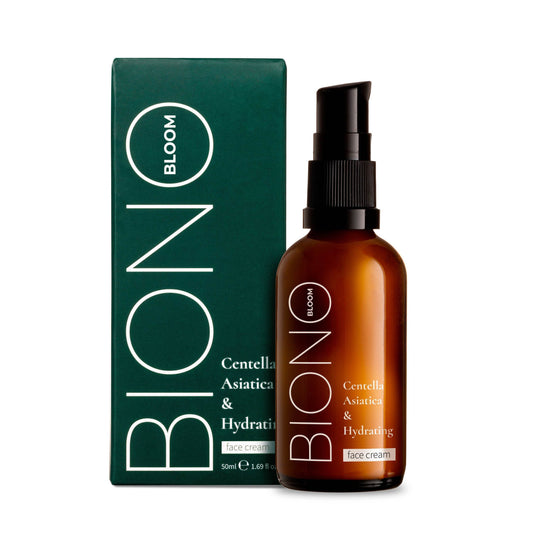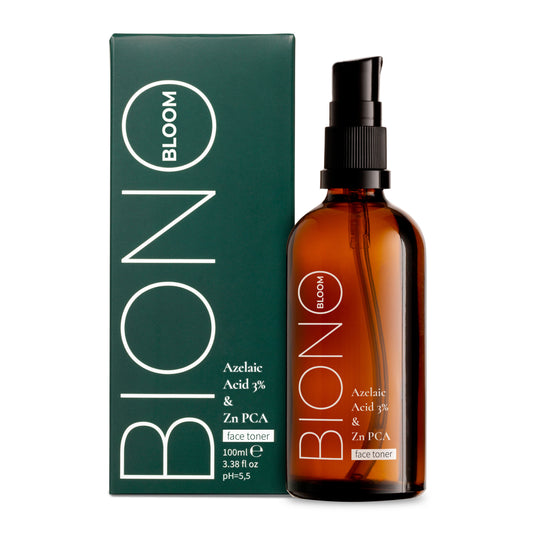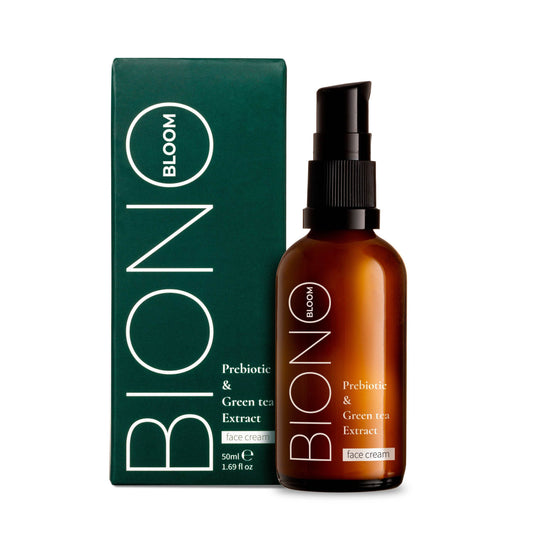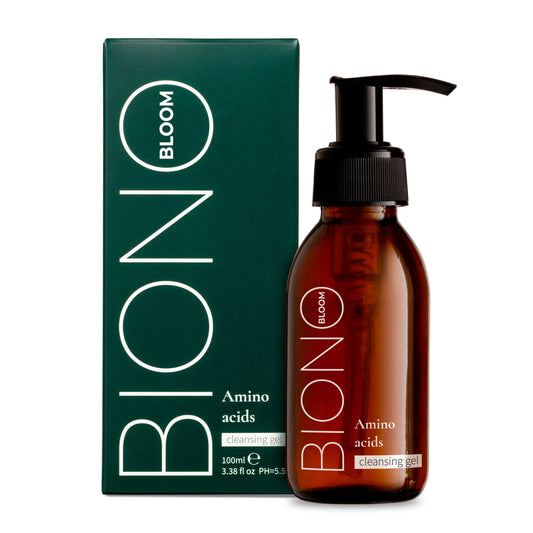Collection: Skin hydration
-
Blemish Control Serum with Salicylic Acid and Niacinamide
Regular price From 21,00 zł PLNRegular priceUnit price / per -
Eye and eyelid skin serum "Peptide Complex and Marine Collagen"
Regular price From 22,00 zł PLNRegular priceUnit price / per -
Moisturizing face cream with centella
Regular price 35,00 zł PLNRegular priceUnit price / per -
Facial toner with azelaic acid 3% "Anti-Pollution"
Regular price From 17,50 zł PLNRegular priceUnit price / per -
Anti-acne face cream with prebiotics and green tea extract
Regular price 39,00 zł PLNRegular priceUnit price / per -
Cleansing Washing Gel with Amino Acids
Regular price 40,00 zł PLNRegular priceUnit price / per
Moisturizing skin cosmetics
Moisturizing skincare products are the foundation of effective skincare. Proper hydration affects the condition, elasticity, and appearance of the skin. Dehydrated skin loses firmness, becomes rough, and is prone to wrinkles. Moisturizing products prevent water loss and restore optimal hydration levels.
Professional skin moisturizers contain humectants, occlusives, and emollients. These ingredients have a multifaceted effect: they bind water, create a protective barrier, and smooth the skin's surface. Hyaluronic acid, glycerin, ceramides, and urea are the most effective moisturizing substances.
Choosing moisturizing cosmetics requires an analysis of skin type and degree of dehydration. Dry skin requires rich formulas, while oily skin requires lightweight gels. Regular moisturizing keeps skin in good condition, slows aging, and improves skin tone.
Types of skin moisturizing cosmetics
Skin moisturizers are divided into categories based on formula and purpose. Each category addresses a specific stage of moisturizing. A complete skincare routine requires products with different textures and effects.
Basic types of moisturizing cosmetics:
- Moisturizing creams - rich-consistency preparations, day and night, for face and body
- Moisturizing serum - concentrates with a high content of hyaluronic acid, intensive action
- Moisturizing gels - light formulas for oily and combination skin, quickly absorbed
- Moisturizing masks - intensively moisturizing products, used 1-2 times a week
- Body milks - moisturizing emulsions for daily skin care
- Moisturizing toners - fluids that prepare the skin and provide light hydration
Moisturizers should be applied in the appropriate order: toner prepares, serum intensively moisturizes, and cream protects. The product's texture, tailored to your skin type, ensures optimal absorption.
Moisturizing products work synergistically. Layer upon layer, a protective barrier is built. Moisturizing skincare products from the same line enhance the moisturizing effects.
Active ingredients in moisturizing cosmetics
The effectiveness of skin moisturizers depends on their active ingredients. Humectants bind water, occlusives prevent evaporation, and emollients smooth the skin. The concentration of moisturizers determines the product's effectiveness.
The most important moisturizing ingredients:
Humectants - bind water:
- Hyaluronic acid - binds up to 1000 times more water than its weight
- Glycerin - a universal humectant, attracts moisture
- Urea - moisturizes, exfoliates, regenerates the barrier
- Aloe - moisturizes, soothes, cools
- Sorbitol - humectant, retains water in the epidermis
Occlusants - create a barrier:
- Ceramides - rebuild the lipid barrier, prevent TEWL
- Squalane - a natural lipid, protects against water loss
- Vegetable oils - create a protective layer, nourish
- Vaseline - a strong occlusive agent, protects dry skin
Emollients - smooth:
- Shea butter - moisturizes, smoothes, nourishes
- Lanolin - emollient, increases elasticity
- Cholesterol - rebuilds the lipid structure
Moisturizing cosmetics combine several types of ingredients. Humectants provide moisture, occlusives protect, and emollients smooth. The multi-ingredient formula provides comprehensive hydration.
Moisturizing face creams
Facial moisturizers are essential skincare products. Day creams hydrate, protect against external factors, and provide a base for makeup. Night creams intensely moisturize while you sleep, supporting regeneration.
Moisturizing creams are categorized by skin type. A cream for dry skin contains a high concentration of lipids, shea butter, ceramides, and oils. It has a rich, nourishing texture. A cream for oily skin has a light formula, contains mattifying ingredients, and moisturizes without weighing down. A cream for combination skin balances moisture and regulates sebum in the T-zone. A cream for sensitive skin soothes, strengthens the skin barrier, and gently moisturizes.
Applying a moisturizer requires clean skin. A small amount of cream is applied evenly, gently patting it in. The cream absorbs in 2-3 minutes. Apply the day cream in the morning and the night cream before bed. Regular use of a moisturizer improves the condition, elasticity, and tone of the skin. Moisturized skin looks younger and healthier.
Moisturizing serum - intensive treatment
This moisturizing serum is a concentrate of active ingredients. Its high content of hyaluronic acid, glycerin, and peptides provides intense hydration. The serum penetrates deeper than a cream, acting on the deeper layers of the skin.
A moisturizing serum is applied before cream. Its light consistency absorbs quickly and delivers high concentrations of active ingredients. A serum with hyaluronic acid of varying molecular weights moisturizes all skin layers. Low-molecular-weight molecules penetrate deeply, while high-molecular-weight ones act superficially. A serum with ceramides rebuilds the lipid barrier. A serum with vitamins provides antioxidant protection for moisturized skin.
Apply the moisturizing serum after cleansing and toning. Pat 3-4 drops of the serum into the skin of the face, neck, and décolleté. The serum absorbs within a minute. Apply a moisturizing cream after the serum. Use the serum morning and evening. The effects of intense hydration are visible after 1-2 weeks. Skin becomes smoother, more elastic, and plump.
Moisturizing gels for oily skin
Moisturizing gels are products for oily and combination skin. The light, watery consistency moisturizes without weighing it down. The gel doesn't clog pores, absorbs instantly, and leaves the skin matte.
Moisturizing gels contain hyaluronic acid, aloe, and niacinamide. These ingredients moisturize, mattify, and regulate sebum. The gel with hyaluronic acid intensely moisturizes without a greasy film. The gel with niacinamide moisturizes and tightens pores. The gel with aloe moisturizes, soothes, and cools. The oil-free formula is ideal for oily skin. The gel does not cause shine or cause imperfections.
Apply the moisturizing gel to cleansed skin. Spread a small amount evenly over the face. The gel absorbs in 30 seconds. Use the gel in the morning under makeup and in the evening after removing makeup. The moisturizing gel does not require the application of an additional cream. Skin remains moisturized, matte, and fresh all day long.
Moisturizing masks - intensive SOS
Moisturizing masks provide intensive treatment for dehydrated skin. Their high concentration of active ingredients works quickly. Used once or twice a week, the mask complements your daily moisturizing care routine.
Types of moisturizing masks by form:
- Fabric masks - soaked in serum, moisturize for 15-20 minutes
- Cream masks - rich texture, intensely nourishes and moisturizes
- Gel masks - light formula, cools, moisturizes without weighing down
- Overnight masks - night treatments, intensively regenerating and moisturizing
- Hydrogel masks - innovative form, deep hydration
Applying a moisturizing mask requires cleansed skin. Apply an even layer and leave on for 10-20 minutes. The fabric mask adheres to the face, delivering serum. After applying the mask, pat any remaining serum into the skin or rinse with water. Apply a moisturizer after the mask to maintain the results. The moisturizing mask provides immediate results: plump, smooth, and radiant skin.
Body moisturizing - care cosmetics
Moisturizing cosmetics for the body prevent dryness, roughness, and flaking. Body skin has fewer sebaceous glands than the face and requires intensive hydration. Body milks, balms, and butters are products for daily care.
Body lotions have a light consistency and absorb quickly. They contain glycerin, aloe, urea, and oils. Apply the lotion daily after bathing to damp skin. Body balms are richer and more intensely moisturizing. They contain shea butter, ceramides, and vitamins. This balm is ideal for dry skin, especially in winter. Body butters are the most nourishing formulas. They contain high concentrations of cocoa butter, shea butter, and mango butter. Apply the butter to very dry skin, such as elbows, knees, and feet.
Moisturizing body products should be applied after every bath. Wet skin absorbs products better. Apply cosmetics with massaging movements until completely absorbed. Regular body moisturizing keeps skin smooth, elastic, and healthy. Moisturized skin looks younger and is more resistant to stretch marks.
Moisturizing your skin according to the season
Skin's moisturizing needs change seasonally. Moisturizing cosmetics should be adapted to weather conditions. Lighter formulas in summer, richer ones in winter – adapting to temperature, humidity, and sunlight.
Summer moisturizing requires lightweight products. Moisturizing gels, light emulsions, and thermal water are perfect for summer. Water-based textures absorb quickly and don't weigh down the skin. Moisturizing with SPF protection is essential. The sun intensely dehydrates the skin. Aftersun with aloe and panthenol moisturizes after exposure. More intense moisturizing – twice daily.
Winter moisturizing requires richer formulas. Nourishing creams, butters, and oils—winter cosmetics. Thick, occlusive textures protect against frost and wind. Frost damages the lipid barrier, causing the skin to lose water more rapidly. Moisturizing is enhanced with ceramides, squalane, and butters. Winter moisturizers have a higher lipid concentration. Evening moisturizing is particularly intensive—nighttime regeneration is crucial. Seasonal adaptation of moisturizing keeps skin in optimal condition year-round.

